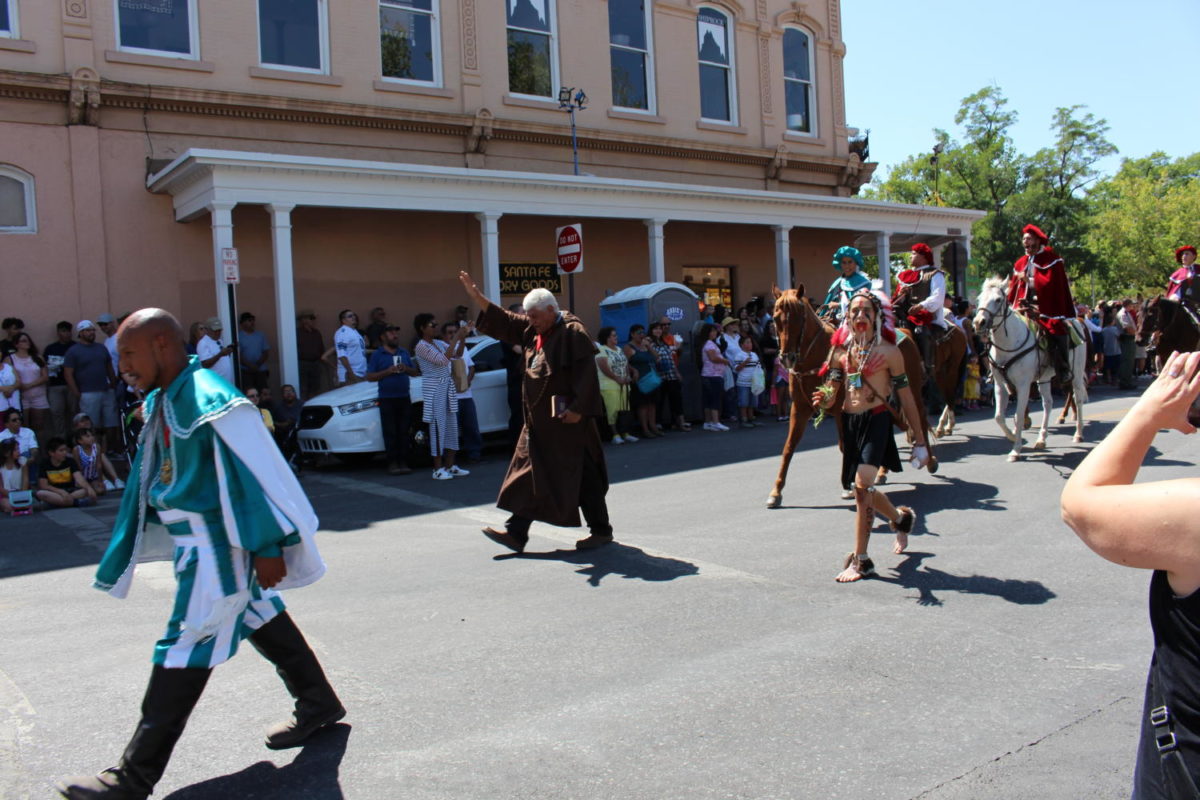Should the Entrada Be Abolished?
September 28, 2017
What is the “Entrada,” and what’s all the fuss over it?
The Entrada is a yearly reenactment of Don Diego De Vargas’ “peaceful resettlement” of Santa Fe on the Friday of Fiesta weekend. Many people assert that the reenactment doesn’t accurately portray the events as they occurred. Even Santa Fe’s tourism page states, “Pueblo Indians occupied Santa Fe until 1692, when Don Diego De Vargas reconquered the region and entered the capital city after a bloodless siege.”
But according to historians, this is not true.
Prior to the arrival of the Spanish to the New World, millions of Native Americans inhabited the Americas. Most of New Mexico’s indigenous population were Pueblo people, and contrary to popular belief, they were actually quite civilized. They had a complex community, a unique language within each tribe, and an organized religion.
When the Spanish arrived in New Mexico, they attempted to “civilize” the Pueblo peoples. They attempted to convert them to Catholicism, set up systems of forced labor, and exerted a tremendous amount of power in Pueblo communities.
Tired of this, in 1680 the pueblos united and, led by Popé, a religious leader from the Ohkay Owingeh pueblo, revolted against the Spanish and chased them back to Mexico. The Spanish stayed away for twelve years, but when they returned in 1692, Don Diego De Vargas and his army reconquered the city in a bloody and violent swoop.
Almost every New Mexico resident has taken part in Fiesta traditions, but they probably didn’t realize that the tradition celebrated a bloody and violent conquest as opposed to the bloodless and peaceful conquest that is marketed to New Mexico residents and tourists.
This is the problem that the Entrada Movement is attempting to tackle. According to the “Santa Fe New Mexican,” protesters of the Entrada want the reenactment to be a more accurate portrayal of the historical event and thereby make Fiestas more inclusive.
According to The Red Nation, an organization “dedicated to the liberation of Native peoples from capitalism and colonialism,” the All Indian Pueblo Council and the Eight Northern Pueblos expressed their condemnation of the Entrada in 1977. And while there have been protests in recent years, this year, people are taking the movement more seriously, and the possibility of abolishing the Entrada is in question.
It is unclear as to what exactly caused the increase in protesters and the intensity of the movement this year, though many assume it was related to the events in Charlottesville, Virginia, where a man drove his car into a crowd of people protesting a demonstration of white supremacists who were opposing the removal of a Confederate statue. One woman was killed and numerous people were injured.
Attitudes and opinions surrounding the Entrada and the movement that opposes it are starkly divided. Many long-time residents of Santa Fe believe the Entrada should continue because it is historically significant to our town, or they don’t think it is offensive to Native Americans.
Juliana Rivera, a junior at SFHS, believes there isn’t anything wrong with the way Fiestas are currently celebrated. “You can’t change history,” Juliana stated, adding that at least Fiestas don’t show the terrible parts of the history.
Others believe that it perpetuates an inaccurate portrayal of history and in a sense whitewashes Spanish culture. Marina Wright, another SFHS junior, said, “The Entrada Movement is necessary because Fiestas only show a romanticised version of our history. We are celebrating the suppression of an entire culture.” Her beliefs are common among those who strongly oppose the Entrada.
How might this affect Santa Fe’s long tradition of Fiestas? If the Entrada were to be abolished, that could be the end of it and everything else to do with the celebrations might just continue. On the other hand, that may not quell The Red Nation and the protesters who are demanding a more accurate representation of the history behind Fiestas.
Some supporters of the Entrada ask, If Santa Fe were to make the Entrada reenactment more historically accurate, who would genuinely want to celebrate after seeing it?
A vast majority of people who attend Fiestas remain blissfully ignorant of the actual history behind the celebrations. Being enlightened about the dark history behind Fiestas might create discontent with many Santa Fe residents, and this could contribute to the discontinuation of other parts of Fiestas, or perhaps the whole tradition.


